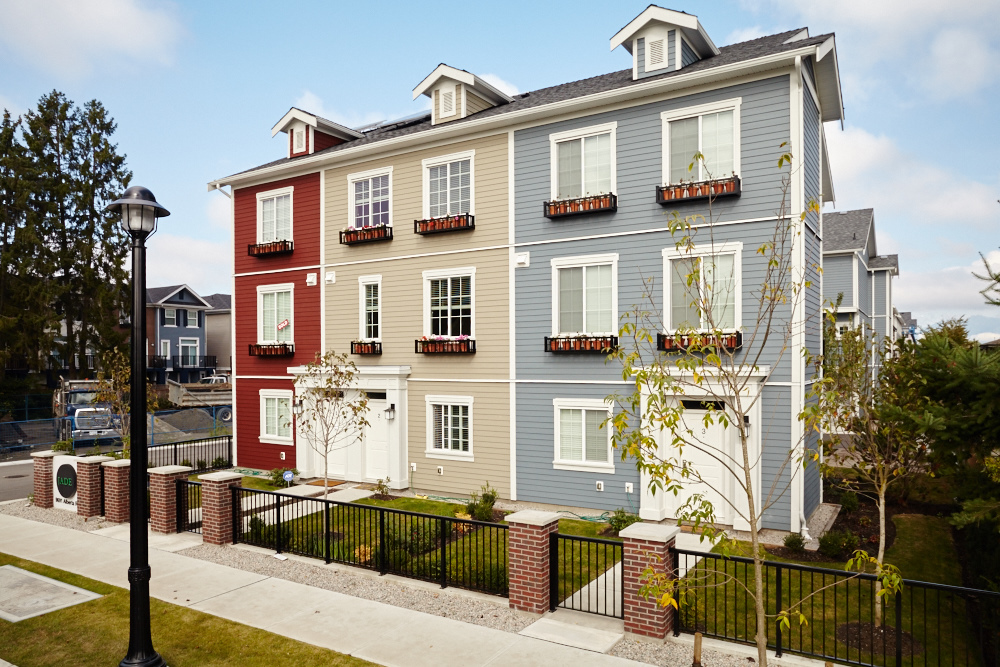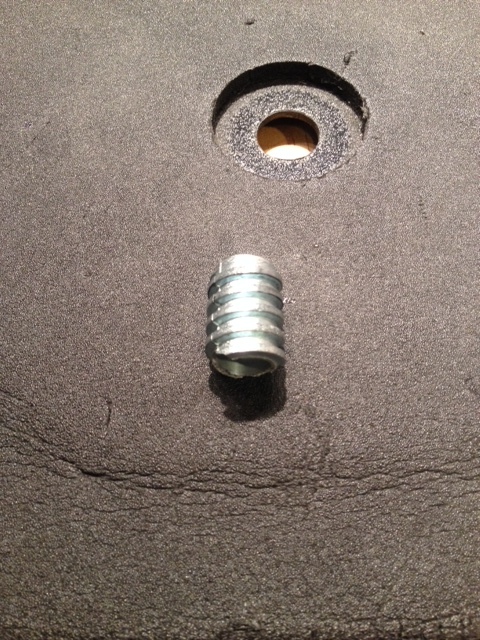I used to participate in a bicycling forum that had an area where people would report when a piece of equipment failed, how, and under what conditions. This was tremendously useful for figuring out what worked, what didn't, and what you might expect if something busted. Georgie Awards season seems to be particularly hard on gear (and photographers, for that matter): you're shooting constantly, you're moving quickly, and everyone has the same deadline and seems to save things to the last minute, so things get "ridden hard and put away wet". Every year, something often gets busted over the course of the Georgie rush--even if it's something minor like a flash trigger (that's happened a couple of times), or cabling. We all love it when Georgie projects win, but it's also instructive to see when gear...loses it big. So I'm making a couple of contributions to the fine tradition of reporting gear failures. Onward. I shoot a fair number of exteriors using pole aerial photography (PAP). PAP is a great way of getting a second or third-storey elevated position on a building, and it's particularly nice for real estate work and for highlighting things on roofs. The project I photographed earlier today is a perfect candidate for this: it's a three-storey townhouse with...solar panels on the roof! So, out came the pole, and photos like this got made:

Standard developer photo fare in this market, in other words. This was on a windy early afternoon, with inconsistent light--as you can see, it went from bright sun to dark cloud, and so I was having to move quickly. Moving a pole aerial setup without an assistant is a bit of a chore: you retract the pole, then with both hands, slide the pole out so you can carry it by the weight of the camera (and if you shoot tethered, as I almost always do when shooting PAP, grab your laptop with your now-free hand). That's the usual and "safe" way to do things--but when you might only get a few seconds of decent light, you can often tweak your framing by scooting the pole along the ground, particularly if you're on wet grass. My luck ran out with this approach: while moving the pole into position, elevated at about 12 feet, a gust of wind pushed the pole right when I didn't have it solidly stabilized. Even a partially extended pole with a Canon 5D2 and a 17-40L on it gets unwieldy quickly in those conditions...and down the whole thing went. Somewhere in the fateful second or so between "we're there, let's shoot", "aim for the grassy boulevard!", and "f*** nooooo!" something interesting happened: the top thread of the pole sheared off, sending the pole one way and the camera, pole adapter, and resting plate, rolling off into the street. Ouch.

The good news: the camera survived, amazingly. (I likely have Really Right Stuff's custom-fitted Arca-Swiss L bracket to thank for that; a single point screw tripod plate would have probably ripped the tripod screw clean out of the bottom of the camera) So did Pole Pixie's Pro screw adapter, the Desmond Arca-Swiss-compatible clamp, and the foam resting plate--though it's even more banged up than it was before and I should probably replace it. And apart from being cosmetically torn up, the RadioPopper JrX trigger I had in the hot shoe also seems to have survived.
The bad news: the nearly new 17-40L lens (bought to replace a previous copy of that lens which, uh, I dropped a couple of times and after a couple of trips back to CPS, wouldn't hold its focus particularly well) and the expensive circular polarizer took all the force. The polarizer's obviously toast. The lens I'm not so sure about--I'm calling CPS first thing on Monday to see about repair pricing. My gut feeling is that it's probably going to end up as an expensive paperweight, but since the glass seems to be fine, I might be able to get away with having the front ring replaced and the whole thing recalibrated.

Now what? Apart from figuring out what to do about that lens (it's a backup lens, so I kept merrily on shooting on that project with other lenses), I now need to put together a new PAP rig. The resting plate isn't intended to take the full weight of a falling camera, but it's certainly done well breaking falls--so it, or a variant on it, is a must. The Pole Pixie adapter survived with nary a scratch, so it's good to go, and so is the Arca clamp. Pole Pixie has a 5-section pole that looks better than the pole I was using (which worked well for about 5 years)--and it's seemingly a rebadge of a pole that's actually designed by a company in Ontario for display use, so to avoid customs issues I'm trying to see if I can source the original. A few months ago, I was considering that a safety line rigged from the camera to a point below the pole top would probably be a good idea, and it turns out that I was right: had I rigged something, the lens might have survived. What looked like a possible weak point...was.
So now I have an industrial design problem to solve: since it's a near truism of pole aerial photography that Someday, Your Gear Will Fall, I'm thinking that the Real Solution to this is to put together a lightweight roll cage--ideally, out of bent metal rod, but prototyping it from metal drywall angle would probably do the trick and would be a lot better than nothing. The cage would be set up to not obstruct the field of view on the 17TS-E (yes, I've been known to fly that $$$$ piece of glass on the pole...call me crazy, but the results are worth it) when shifted, and would attach to the pole below the threads--possibly with a plastic or metal collar.
